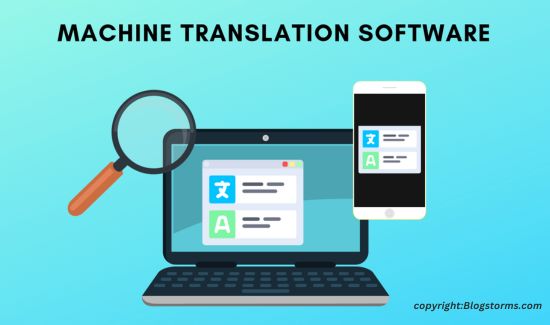In today’s interconnected world, the ability to communicate effectively across languages is paramount for success. Whether you’re a multinational corporation, a small business owner, or an individual entrepreneur, mastering преводеч tactics can significantly enhance your impact and broaden your reach. In this comprehensive guide, we’ll explore ten powerful tactics to maximize your success through translation.
Table of Contents
Understanding Your Audience
Before delving into преводеч tactics, it’s essential to understand your target audience. Conduct thorough research to identify their language preferences, cultural nuances, and communication styles. Tailoring your translations to resonate with your audience will greatly enhance your impact and foster meaningful connections.
Quality Over Quantity

When it comes to translation, quality should always take precedence over quantity. Invest in professional translators who are native speakers of the target language and possess subject matter expertise. High-quality translations not only ensure accurate communication but also convey professionalism and credibility to your audience.
Contextual Adaptation
Effective translation goes beyond mere word-for-word conversion; it requires careful consideration of context. Adapt your translations to suit the cultural, social, and linguistic context of your target audience. Pay attention to idiomatic expressions, metaphors, and cultural references to ensure your message resonates authentically.
Localization Strategies
Localization involves customizing your content to meet the specific needs and preferences of different regions or markets. This may include adapting language, currency, date formats, and imagery to align with local conventions. By implementing localization strategies, you can create a more personalized and engaging experience for your audience.
Multimodal Communication
Maximize the impact of your translations by leveraging multimodal communication channels. Combine written text with visuals, audio, and video content to cater to diverse learning styles and preferences. Embracing multimedia formats not only enhances comprehension but also enriches the overall user experience.
Continuous Improvement
Translation is an ongoing process that requires continuous refinement and improvement. Solicit feedback from your audience, monitor performance metrics, and stay abreast of linguistic trends and developments. By prioritizing continuous improvement, you can ensure that your преводеч tactics remain effective and relevant over time.
Technology Integration

Harness the power of technology to streamline and optimize your translation processes. Explore translation management systems, machine translation tools, and artificial intelligence solutions to increase efficiency and accuracy. While technology can enhance productivity, it’s essential to maintain human oversight to preserve quality and nuance.
Cultivating Linguistic Diversity
Embrace linguistic diversity as a strategic asset rather than a barrier. Celebrate and support multilingualism within your organization and community. By fostering a culture of linguistic inclusivity, you can attract a broader audience, foster cross-cultural understanding, and unlock new opportunities for growth and innovation.
Collaboration and Partnerships
Forge strategic partnerships with language service providers, translators, and cultural experts to augment your преводеч capabilities. Collaborate with local influencers, organizations, and community leaders to enhance your cultural relevance and authenticity. By pooling resources and expertise, you can amplify your impact and expand your reach.
Measuring Impact and ROI

Finally, measure the impact of your преводеч efforts and assess their return on investment (ROI). Track key performance indicators such as website traffic, engagement metrics, and conversion rates across different language segments. By quantifying the impact of translation on your business objectives, you can optimize your strategy and allocate resources effectively.
Pros and cons
Pros:
- Global Reach: Translation services enable businesses to reach international audiences by breaking down language barriers and making content accessible to speakers of different languages.
- Cultural Adaptation: Professional translators not only translate words but also understand cultural nuances, ensuring that content is culturally appropriate and resonates with the target audience.
- Accuracy and Quality: Skilled translators ensure accurate and high-quality translations, maintaining the integrity and message of the original content across languages.
- Legal Compliance: Translation services help businesses comply with legal and regulatory requirements by providing accurate translations of legal documents, contracts, and other official materials.
- Time and Cost Savings: Outsourcing translation tasks to professional services saves time and resources, allowing businesses to focus on core activities while benefiting from fast and efficient translation solutions.
- Market Expansion: Effective translation enables businesses to expand into new markets and territories, tapping into diverse customer bases and driving growth opportunities.
Cons:
- Cost: Professional translation services can be expensive, especially for businesses with ongoing translation needs or large volumes of content to translate.
- Potential for Errors: Despite efforts to maintain accuracy, translations may contain errors or inaccuracies, especially if the translator lacks proficiency in the source or target language.
- Loss of Nuance: Translating complex or nuanced content can be challenging, leading to the loss of subtleties, idiomatic expressions, or cultural references present in the original text.
- Dependency on External Services: Relying on external translation services can create dependency and may pose challenges if there are delays or issues with the service provider.
- Linguistic Limitations: Not all languages may have readily available translation services, especially for less common or specialized languages, limiting accessibility for certain audiences.
- Confidentiality Concerns: Sharing sensitive or proprietary information with external translators may raise concerns about confidentiality and data security, especially in industries with strict privacy regulations.
Faqs about преводеч
Q: What is Преводеч?
Ans: Преводеч is a term related to translation, often used in various contexts including language services and localization.
Q: What does Преводеч entail?
Ans: Преводеч encompasses the process of translating text from one language to another, ensuring accurate and culturally appropriate communication.
Q: How important is Преводеч in today’s globalized world?
Ans: Преводеч is crucial for facilitating international communication, business expansion, and cultural exchange in our interconnected society.
Q: Who typically requires Преводеч services?
Ans: Businesses, organizations, government agencies, and individuals seeking to communicate effectively across language barriers rely on Преводеч.
Q: What types of content can be translated through Преводеч?
Ans: Virtually any type of content, including documents, websites, software, multimedia, legal contracts, and marketing materials, can undergo Преводеч.
Conclusion
In conclusion, mastering преводеч tactics is essential for maximizing your impact and achieving success in today’s global marketplace. By understanding your audience, prioritizing quality, adapting to context, and leveraging technology, you can create compelling translations that resonate with diverse audiences worldwide. Remember to continuously refine your approach, embrace linguistic diversity, and measure your impact to ensure ongoing success. With the right strategies and mindset, you can overcome language barriers and unlock a world of opportunities for growth and prosperity.
